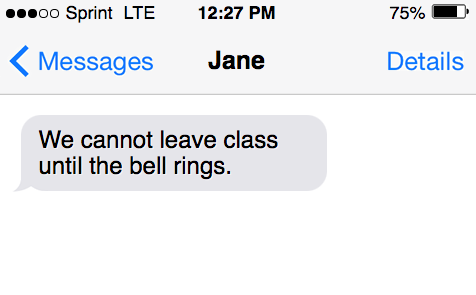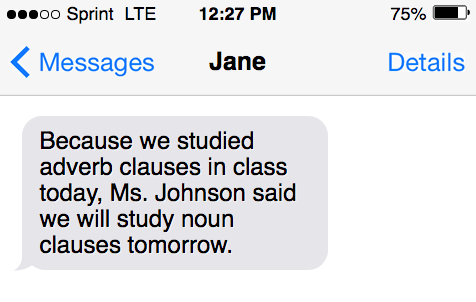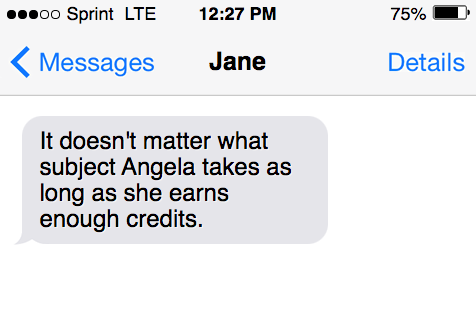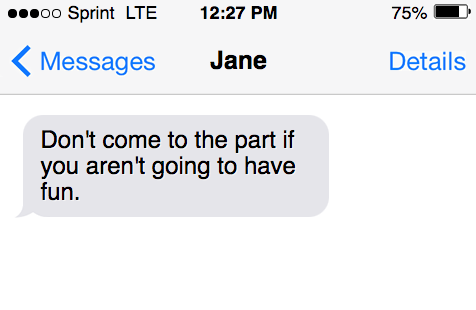How does a person use a complex sentence correctly in their writing? As with any other type of sentence, there are certain rules for constructing a complex sentence. Keep reading to discover what elements a complex sentence contains, examples of complex sentences, and how these examples differ from other types of sentences.

What are complex sentences?
A complex sentence is a sentence that contains an independent clause and at least one dependent clause.
Typically, these statements are used to include more information to modify or explain a sentence’s main idea.
To connect clauses, complex sentences often use a subordinate conjunction like “since” or “because.”
The most common type of complex sentences are conditional sentences, which use an “if-then sentence structure).

Therefore, if one clause is true, then the other must also be true.
Although they share similarities with compound sentences, complex sentences are a little different.
Additionally, complex statements are different from simple sentences.
The primary distinction complex sentences contain from other types of sentences is that they include a dependent clause.
What is a subordinating conjunction?
Subordinating conjunctions are the words or phrases that connect a dependent clause to an independent clause.
Most often, subordinating conjunctions signal a cause and effect relationship or a shift in time and place between the two clauses.
Some of the most common subordinating conjunctions include:
Dependent clauses that begin with a subordinating conjunction are called subordinate clauses.
Again, subordinating clauses cannot be written as a complete statement on their own; they must have more information to form a complete thought.

Coordinating conjunctions
It’s important to note that subordinating conjunctions are different from coordinating conjunctions.
These conjunctions are words that join two independent clauses of equal grammatical rank.
They can join two verbs, two nouns, two phrases, two independent clauses, or two adjectives.
There are only seven coordinating conjunctions, which are the following terms:
- For
- And
- Nor
- But
- Or
- Yet
- So
To make it easier to remember, use the acronym FANBOYS.
Dependent clause
As previously mentioned, complex sentences must contain at least one dependent clause.
Dependent clauses cannot act as a complete sentence on their own.
Rather, dependent clauses require an independent clause connected to them.
Still, a dependent clause always contains a subject and a verb.
The detail that makes a dependent clause different is that it typically begins with a subordinating conjunction.

Examples of dependent clauses
“Because my dad asked for more soda…”
“If he were to study more often than one night a week…”
“Whenever Gertrude gets back…”
As you can see, these examples cannot stand alone as a sentence.
Rather, they express partial thoughts and require more information to form a complete sentence.
Independent clause
The difference between independent and dependent clauses is pretty simple.
Where dependent clauses express only part of a thought, an independent clause is a complete sentence on its own.
The way these two clauses are similar, however, is that both include a subject and a verb.
Still, independent clauses serve as a standalone sentence.

Dependent clauses are integral to independent clauses, especially when discussing complex sentences.
That said, the subordinating conjunction that a dependent clause begins with alters the meaning of an independent clause that previously stood alone.
Examples of independent clauses
- “Tim cannot come over after school.”
- “My dog ran away.”
- “The weather is cooler today.”
- “Lisa’s basketball game ended early.”
What is a simple sentence?
A simple sentence is any sentence structure that only includes one independent clause.
Therefore, any sentence with more than one clause cannot be a simple sentence.
Simple sentences are some of the most basic clauses in the English language.
Still, although a simple statement typically doesn’t contain a lot of words, the clause can stand alone.
In writing, one can often combine two simple sentences to form a complex sentence that makes sense.
With that, one uses a subordinating or coordinating conjunction to combine the two.

Simple vs. complex sentences
The primary difference between simple and complex sentences is that the former only has one independent clause.
Complex sentences, on the other hand, have an independent clause as well as one or more dependent clauses.
For example, a simple statement looks like this:
“Tom got a headache.”
Further, a complex sentence using the above example could look something like this:
“Tom got a headache because he played video games for six hours straight.”
In the previous statement, “because he played video games for six hours straight,” cannot stand alone.
The reader asks “why?” or “for what purpose?” due to the fact that “because” begins the statement.
The first clause, “Tom got a headache,” can stand alone and present a clear idea to the reader.
Punctuating complex sentences
Many people struggle to write complex sentences because of the punctuation requirements.
Essentially, comma usage and comma splits can initially seem confusing.
Some complex sentences do not require a comma, while others do.
Here is the general rule on whether or not one needs to use a comma:
- If the independent clause comes first, no comma is required.
- If the dependent clause comes first, place the comma directly before the independent clause.
Here is an example of a complex sentence and the proper comma usage:
“After we successfully subscribed to Hulu, our house could watch The Handmaid’s Tale.”
- This sentence observes the dependent clause placed first.
“Harry left school early because he had a doctor’s appointment.”
- This example observes the independent clause placed first.
Remember, the distinction between independent and dependent clauses is that a dependent one cannot be considered a complete thought.
By remembering the fact about complete sentences, knowing where to place commas is a lot easier.
Examples of complex sentences
Recall that complex sentences require an independent and dependent clause to follow English grammar rules.
That said, here are some complex sentence examples:
- “We cannot leave class until the bell rings.”
- “Because we studied adverb clauses in class today, Ms. Johnson said we will study noun clauses tomorrow.”
- “It doesn’t matter what subject Angela takes as long as she earns enough credits.”
- “Don’t come to the part if you aren’t going to have fun.”
What is a compound sentence?
A compound sentence is a statement connecting two independent clauses.
Often, compound sentences use a coordinating conjunction like “and” or “but.”
These types of sentences are best when combining at least two independent clauses (that are related) into a single clause.
Therefore, the writing is more fast-paced when compound sentences are formed.
Take these two statements, for example; both make sense on their own.
“I am hungry. I want to eat lunch this afternoon.”
Using the word “and,” one can create a statement that meets the definition of a compound sentence.
“I am hungry, and I want to eat lunch this afternoon.”
What is a compound-complex sentence?
A compound-complex sentence is a result of fusing one compound sentence with a complex sentence.
Although these are some of the more sophisticated structures in grammar, they are a great way to provide important information on a specific topic.
These sentences contain three clauses, which are the following:
- 2 independent clauses
- 1 (or more) dependent clauses
Instead of using subordinating conjunctions to join the clauses, a coordinating one is typically used.
These sentences are utilized because they can provide more information than a typical compound or complex sentence is capable of.
That said, here are a few examples of compound-complex sentences:
“There were a lot of people at the concert, so I used my phone to call Abby, and was able to find her quickly.”
- In this statement, “there were a lot of people at the concert” and “I used my phone to call Abby” are two independent statements, connected by the word “so.” The dependent clause, “and was able to find her quickly,” ends the statement.
“The dog played alone in the yard, but nobody was watching him because he was well trained.”
“Since Kayla didn’t have sneakers, she refused to run the mile for gym class, but she still cheered on her peers.”
Compound vs. complex sentences
What is a complex sentence, and how does it differ from a compound one?
A compound statement connects one independent clause with another.
Therefore, there is no dependent clause in these examples.
Complex sentence examples have only one independent clause and at least one dependent clause.
Although the dependent clause would not make sense on its own, it still contains a verb and a subject.
Therefore, the combination of the dependent and independent clause ensures the complex sentence has meaning.
Complex sentences: Examples
Complex sentences are frequently used in everyday speech. They prevent conversations from sounding terse and robotic. Consider the examples of complex sentences given below.
Complex sentences that start with subordinate conjunctions:
- When Jamie was younger, he believed in Santa Claus.
- If Sarah finds the broken vase, she is going to be very angry.
- After Ramone finishes college this semester, he will be going back to Greece.
- Because the deal was canceled, Noah was asked to come back.
- As soon as Arys reaches here, we can take Johnny back home.
Complex sentences that have subordinate conjunctions in the middle:
- Jamie believed in Santa Claus when he was younger.
- Sarah is going to be very angry if she finds the broken vase.
- Ramone will be going back to Greece after he finishes college this semester.
- Noah was asked to come back because the deal was canceled.
- We can take Johnny back home as soon as Arya reaches here.
Complex sentences that have relative clauses acting as dependent clauses:
- My sister, who completed medical school, is now working at Santa Clara Valley Medical Center.
- Relative clause – who completed medical school
- Independent clause – My sister is now working at Santa Clara Valley Medical Center.
- The Casablanca Resort, where we went for our honeymoon, is closing this December due to heavy losses.
- Relative clause – where we went for our honeymoon
- Independent clause – The Casablanca Resort is closing this December due to heavy losses.
- The captain of the college football team, who was also the president of the art club, designed the logo for the literary festival.
- Relative clause – who was also the president of the art club
- Independent clause – The captain of the college football team designed the logo for the literary festival.
How to form complex sentences
Complex sentences are created by combining the main clause with a subordinate or dependent clause. Complex sentences can be formed in one of three ways.
- Using relative pronouns like “who,” “whose,” “which,” and “that.”
- Using subordinate conjunctions.
- Using non-finite verb structures like participle and infinitive verb forms.
Use commas correctly
The two main issues authors face in creating complex sentences are using the appropriate subordinate conjunction and the right placement of commas. The need for a comma in a complex sentence is determined by two simple rules:
- If the first part of a sentence is a dependent clause, a comma should be placed before the main clause.
- If the first part of a sentence is an independent clause, there is no need to use a comma.
Example:
- Although Norah was wealthy, she was depressed and miserable.
- Noah was asked to come back because the deal was canceled.
The first sentence has a subordinate clause in the beginning, so it needs a comma before the main clause. The second sentence does not need a comma since it begins with the main clause.
FAQs
How is a simple sentence different from a complex sentence?
A sentence with just a single independent clause is called a simple sentence. Complex sentences can have more than one independent clause. Furthermore, complex sentences can be created from simple sentences. A complex sentence can be created from two simple sentences by joining them using subordinate conjunctions.
Examples:
Simple sentences:
- Noah drank an entire gallon of milk. He is puking his stomach out.
Complex sentence:
- After drinking an entire gallon of milk, Noah is puking his stomach out.
How is a compound sentence different from a complex sentence?
A compound sentence needs at least two main clauses, whereas complex sentences require only one main clause.
Compound sentence:
Sam made the gingerbread cookies, and Sarah decorated them.
Sources
- What Is a Coordinating Conjunction? – Grammarly
- What Is a Subordinate Clause? – Grammarly
- What Is a Subordinating Conjunction? – Grammarly
- A Guide to Compound-Complex Sentences – MasterClass
- What Is a Complex Sentence? – Grammarly
- What Is a Compound Sentence? – Grammarly
Inside this article
Fact checked:
Content is rigorously reviewed by a team of qualified and experienced fact checkers. Fact checkers review articles for factual accuracy, relevance, and timeliness. Learn more.
Core lessons
Glossary
- Abstract Noun
- Accusative Case
- Anecdote
- Antonym
- Active Sentence
- Adverb
- Adjective
- Allegory
- Alliteration
- Adjective Clause
- Adjective Phrase
- Ampersand
- Anastrophe
- Adverbial Clause
- Appositive Phrase
- Clause
- Compound Adjective
- Complex Sentence
- Compound Words
- Compound Predicate
- Common Noun
- Comparative Adjective
- Comparative and Superlative
- Compound Noun
- Compound Subject
- Compound Sentence
- Copular Verb
- Collective Noun
- Colloquialism
- Conciseness
- Consonance
- Conditional
- Concrete Noun
- Conjunction
- Conjugation
- Conditional Sentence
- Comma Splice
- Correlative Conjunction
- Coordinating Conjunction
- Coordinate Adjective
- Cumulative Adjective
- Dative Case
- Determiner
- Declarative Sentence
- Declarative Statement
- Direct Object Pronoun
- Direct Object
- Diction
- Diphthong
- Dangling Modifier
- Demonstrative Pronoun
- Demonstrative Adjective
- Direct Characterization
- Definite Article
- Doublespeak
- False Dilemma Fallacy
- Future Perfect Progressive
- Future Simple
- Future Perfect Continuous
- Future Perfect
- First Conditional
- Irregular Adjective
- Irregular Verb
- Imperative Sentence
- Indefinite Article
- Intransitive Verb
- Introductory Phrase
- Indefinite Pronoun
- Indirect Characterization
- Interrogative Sentence
- Intensive Pronoun
- Inanimate Object
- Indefinite Tense
- Infinitive Phrase
- Interjection
- Intensifier
- Infinitive
- Indicative Mood
- Participle
- Parallelism
- Prepositional Phrase
- Past Simple Tense
- Past Continuous Tense
- Past Perfect Tense
- Past Progressive Tense
- Present Simple Tense
- Present Perfect Tense
- Personal Pronoun
- Personification
- Persuasive Writing
- Parallel Structure
- Phrasal Verb
- Predicate Adjective
- Predicate Nominative
- Phonetic Language
- Plural Noun
- Punctuation
- Punctuation Marks
- Preposition
- Preposition of Place
- Parts of Speech
- Possessive Adjective
- Possessive Determiner
- Possessive Case
- Possessive Noun
- Proper Adjective
- Proper Noun
- Present Participle
- Prefix
- Predicate



